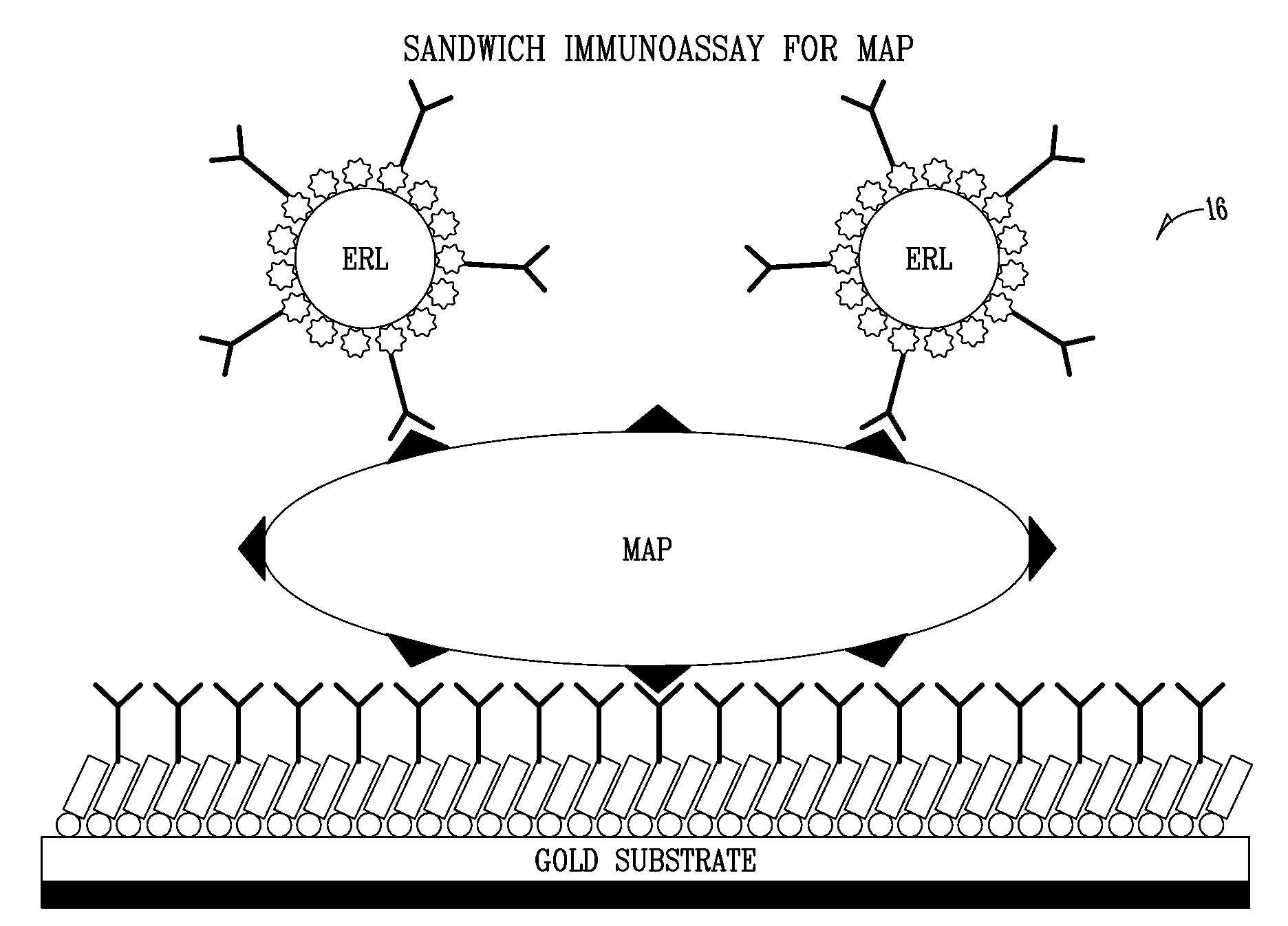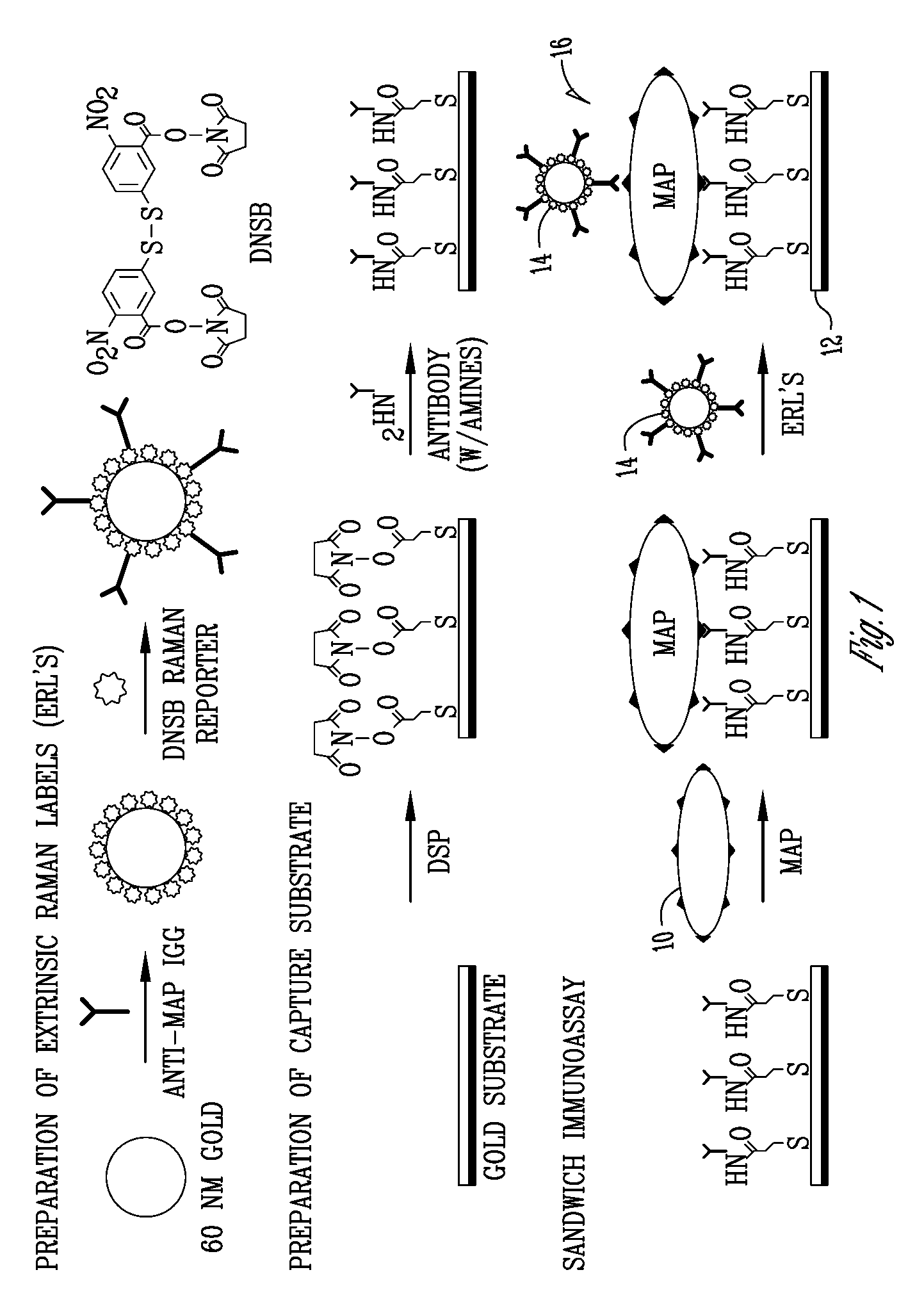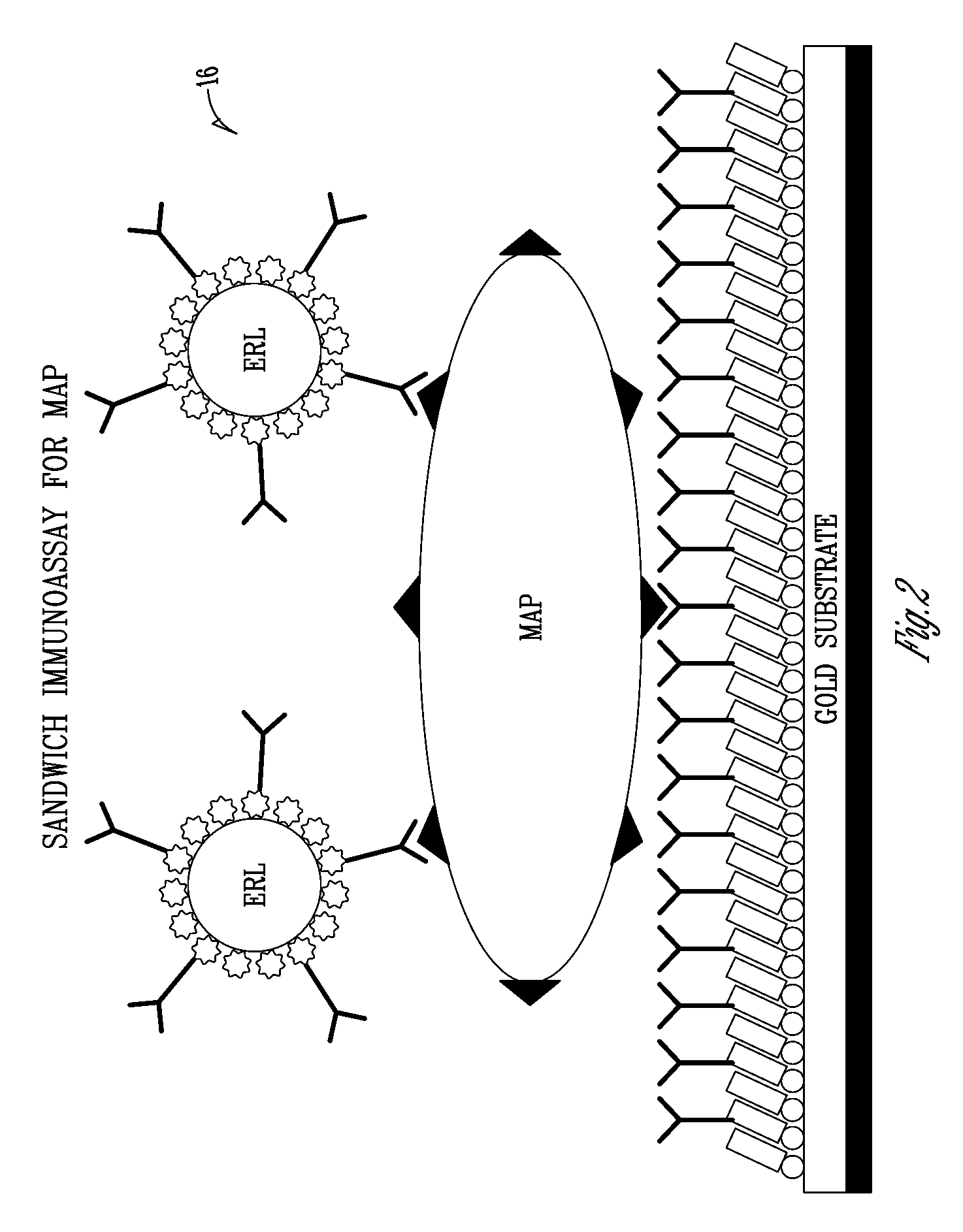Bioamplification for microbial sensor signal transduction
- Summary
- Abstract
- Description
- Claims
- Application Information
AI Technical Summary
Benefits of technology
Problems solved by technology
Method used
Image
Examples
examples
[0029]MAP, K-10 strain bacteria were cultured at the National Animal Disease Center (NADC, Ames, Iowa) as described previously (Yakes, et al. “Detection of Microbacterium avium subsp. paratuberculosis using Surface-Enhanced Raman Scattering: Part I-Sonicate Immunoassay Development, in preparation”) by culturing in Middlebrook's 7H9 medium (Becton Dickinson, Cockeysville, Md.) supplemented with mycobactin J (Allied Monitor Inc., Fayette, Mo.), oleic acid albumin-dextrose complex (Difco, Detroit, Mich.), and Tween 80 (Sigma Chemical Co., St. Louis, Mo.). The bacilli were removed by centrifugation, washed with cold phosphate buffered saline solution (PBS; 0.15 M, pH 7.2), and heat treated at 80° C. for 30 min. All heat-killed, whole cell bacterial concentrations were determined by flow cytometry using LIVE / DEAD® BacLight™ Bacterial Viability and Counting Kit (Molecular Probes, Eugene, Oreg.). The average value was 1.3±0.3×107 bacteria / mL over six aliquots from a stock of MAP in PBS. Th...
PUM
| Property | Measurement | Unit |
|---|---|---|
| Detection limit | aaaaa | aaaaa |
Abstract
Description
Claims
Application Information
 Login to View More
Login to View More - R&D
- Intellectual Property
- Life Sciences
- Materials
- Tech Scout
- Unparalleled Data Quality
- Higher Quality Content
- 60% Fewer Hallucinations
Browse by: Latest US Patents, China's latest patents, Technical Efficacy Thesaurus, Application Domain, Technology Topic, Popular Technical Reports.
© 2025 PatSnap. All rights reserved.Legal|Privacy policy|Modern Slavery Act Transparency Statement|Sitemap|About US| Contact US: help@patsnap.com



